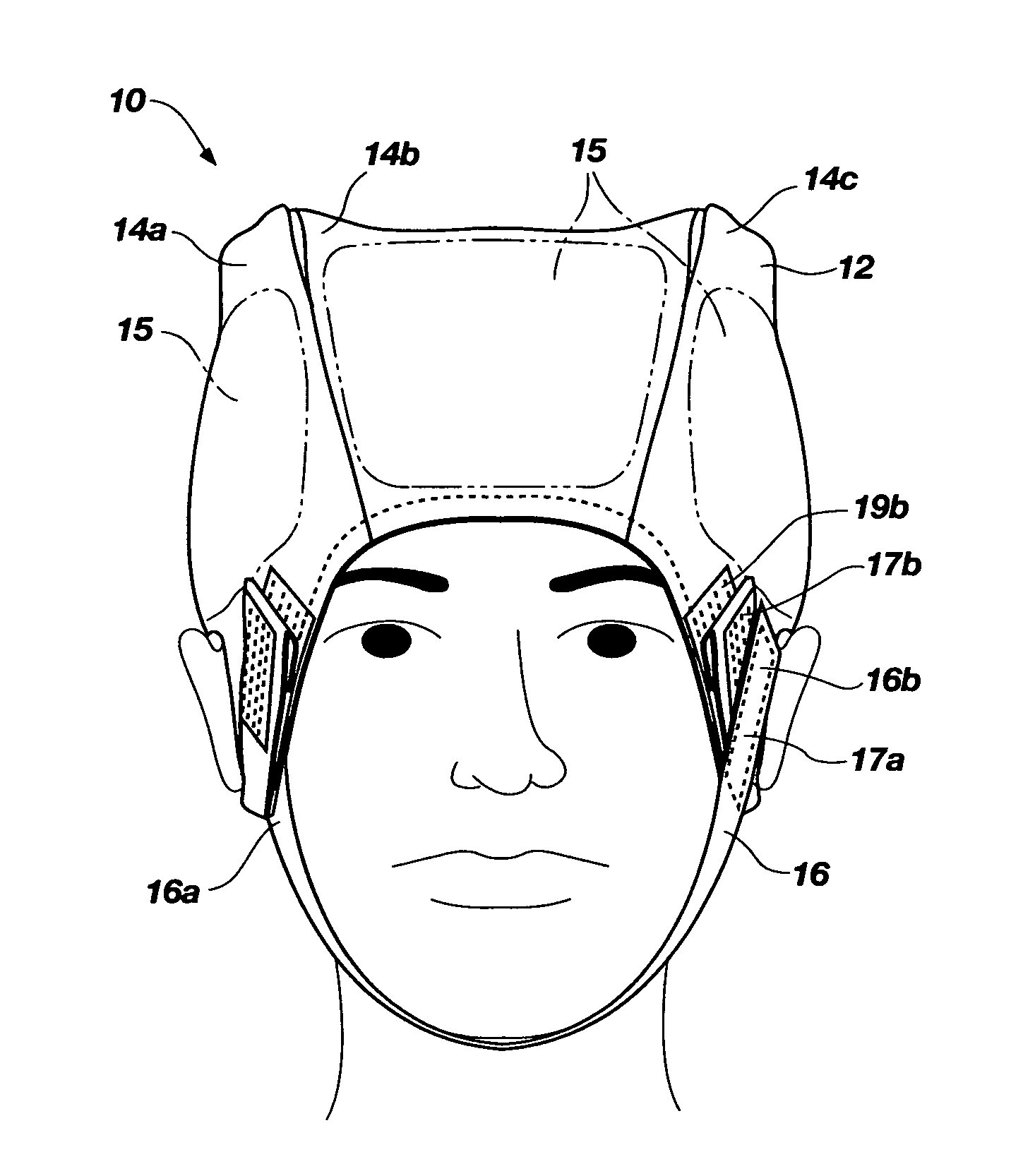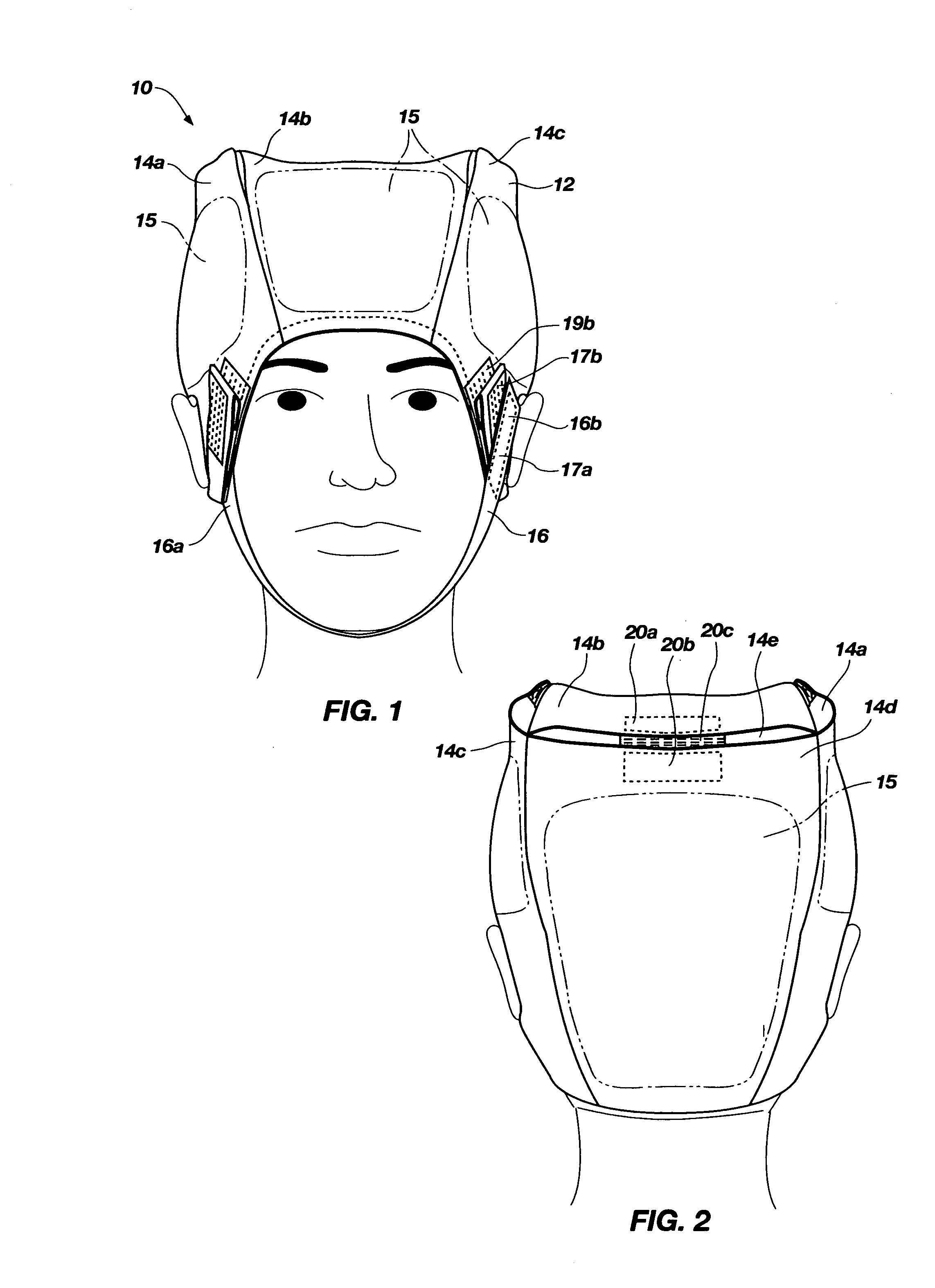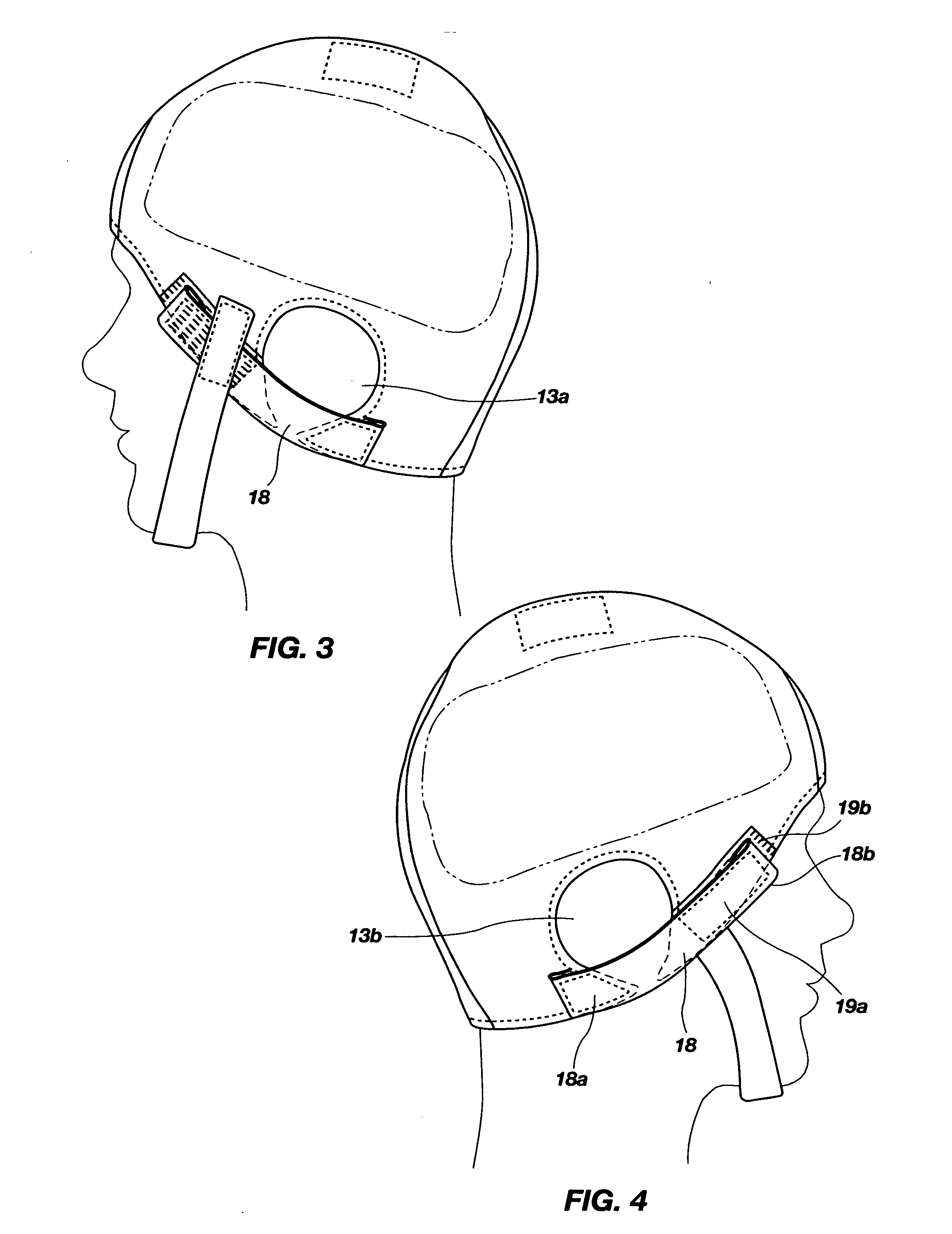Helmet trauma bandage and method
a head injury and bandage technology, applied in the field of bandages and trauma treatment, can solve the problems of rapid deterioration of the patient's condition, death of the patient, and inconvenient compression bandage for head injuries, so as to stop bleeding, stop circulation or aggravate intracranial pressure, and aggravate open wounds.
- Summary
- Abstract
- Description
- Claims
- Application Information
AI Technical Summary
Benefits of technology
Problems solved by technology
Method used
Image
Examples
Embodiment Construction
[0063]FIG. 1 illustrates a front view of a preferred embodiment of the invention 10, shown affixed about the head of a patient. It comprises a stretchable flexible helmet 12 with enough stretch to fit about the forehead, back, sides, and upper part of a patient's head securing the helmet 12 with ear holes 13a, 13b shown in FIGS. 3, 4 about the ears of a patient. The stretchable flexible helmet 12 applies gentile compression force around the head to stop bleeding, but is structured to be loosened and re-attached to prevent circulation stoppage and avoid aggravating intracranial pressure.
[0064]FIG. 1 also shows ice pouches 14a, 14b and 14c which are designed to hold insertable ice packs 15 on the exterior of the flexible helmet 12 proximate the forehead and sides of the head to control intracranial swelling as the result of a head injury. FIG. 2 shows ice pouch 14d positioned on the exterior of the flexible helmet 12 proximate the back of the head to similarly control intracranial swe...
PUM
 Login to View More
Login to View More Abstract
Description
Claims
Application Information
 Login to View More
Login to View More - R&D
- Intellectual Property
- Life Sciences
- Materials
- Tech Scout
- Unparalleled Data Quality
- Higher Quality Content
- 60% Fewer Hallucinations
Browse by: Latest US Patents, China's latest patents, Technical Efficacy Thesaurus, Application Domain, Technology Topic, Popular Technical Reports.
© 2025 PatSnap. All rights reserved.Legal|Privacy policy|Modern Slavery Act Transparency Statement|Sitemap|About US| Contact US: help@patsnap.com



